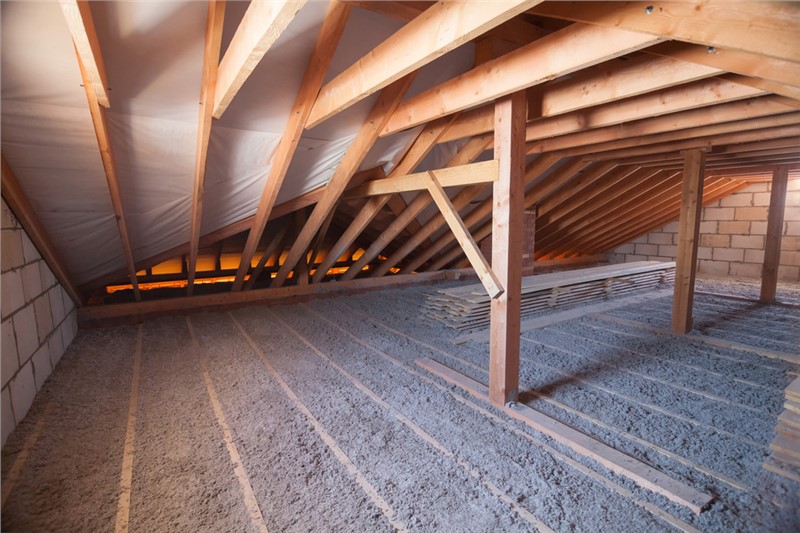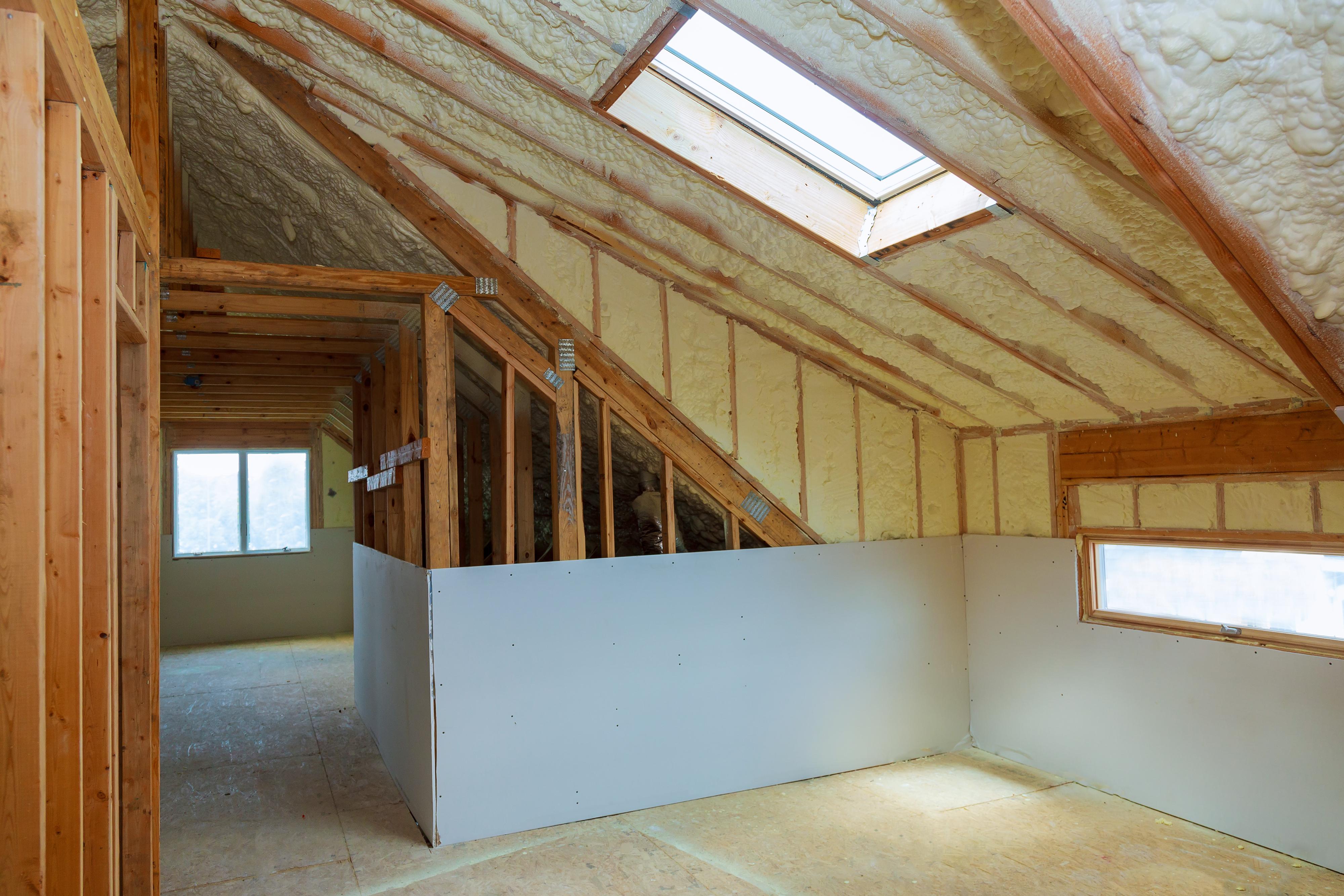Specialist Tips for Enhancing Your Home with Attic Insulation DFW
Wiki Article
Discover the Various Types of Attic Insulation and Their Distinct Advantages for Your Home's Energy Performance

Fiberglass Insulation
Fiberglass insulation is among one of the most typically made use of materials for attic insulation as a result of its outstanding thermal efficiency and cost-effectiveness. Made up of tiny glass fibers, this product effectively traps air, developing an insulating obstacle that helps maintain regular interior temperatures. Its high R-value per inch makes it particularly efficient at standing up to heat transfer, which is crucial for power conservation in homes.
Setup of fiberglass insulation is fairly uncomplicated, frequently readily available in batts or loose-fill kinds, accommodating different attic room configurations. Furthermore, it is resistant and non-combustible to wetness, decreasing the threat of mold development. This longevity contributes to its durability, making fiberglass a practical long-lasting investment for home owners.
Moreover, fiberglass insulation is typically produced from recycled materials, which enhances its eco-friendliness. The material can also contribute to soundproofing, reducing noise transfer between spaces. While it is necessary to put on safety gear throughout installation to prevent inflammation from the fibers, the total benefits of fiberglass insulation, including energy financial savings and environmental considerations, make it a prominent choice for boosting attic room performance and advertising a comfy living atmosphere.
Spray Foam Insulation
Spray foam insulation is an extremely effective choice for attic insulation, recognized for its superior air securing and thermal efficiency. This ingenious insulation material is made up of a blend of isocyanate and polyol resin, which, when combined, increases swiftly to load voids and tooth cavities in the attic space. Its ability to adhere to various surfaces guarantees a continuous barrier versus air leaks, significantly minimizing warm loss throughout cooler months and warmth gain throughout warmer periods.Among the key benefits of spray foam insulation is its high R-value per inch, which indicates it offers outstanding thermal resistance in a relatively slim application. This is especially advantageous in attic rooms where area is frequently limited. In addition, spray foam can assist minimize wetness accumulation, minimizing the risk of mold and mildew and mildew development, which can be detrimental to both the structure and interior air quality.
While the first cost of spray foam insulation might be higher than standard options, its long-lasting power cost savings, combined with increased convenience and enhanced home value, make it a beneficial financial investment for house owners looking for enhanced power performance. Attic Insulation DFW. Overall, spray foam insulation sticks out as an effective option for maximizing attic insulation
Cellulose Insulation

Cellulose insulation is a prominent choice for attic insulation, primarily made up of recycled paper products treated with fire resistants. This ecologically friendly alternative is understood for its outstanding thermal performance, successfully lowering warm transfer in both summer season and wintertime months. The dense make-up of cellulose permits it to fill spaces and voids in attic room rooms, supplying a seamless obstacle against air leaks.
Among the significant advantages of cellulose insulation is its capacity to stand up to mold and pests, owing to the fire resistant treatments made use of during manufacturing. Furthermore, it boasts a Click This Link high R-value per inch, which converts into remarkable energy effectiveness. House owners can anticipate reduced heating & cooling costs as a result of boosted insulation.
Setup is generally completed through blowing loose cellulose right into the desired area, enabling a quick and effective process. This technique additionally minimizes interruption to the existing framework. In addition, cellulose insulation has a relatively low ecological influence, as its production procedure utilizes recycled materials, contributing to lasting building techniques.
Rock Wool Insulation
Amongst the different alternatives for attic room insulation, rock woollen, additionally recognized as mineral woollen, sticks out because of its remarkable thermal and acoustic efficiency. Made from recycled or natural materials, rock woollen is developed by thawing rock and spinning it right into fibers, leading to an item that provides excellent insulation residential or commercial properties.Among the significant advantages of rock wool insulation is its high R-value, which indicates its effectiveness in standing up to heat flow. This particular not only boosts power Click This Link efficiency yet additionally contributes to preserving a comfy interior temperature level year-round. In addition, rock wool is inherently fireproof, making it a more secure option for homes as it can endure heats without melting or releasing toxic fumes.
Moreover, rock woollen insulation stands out in soundproofing capabilities, effectively reducing sound transmission in between spaces and from outdoors sources. This makes it a perfect option for homeowners looking for a peaceful living environment. Furthermore, rock wool is moisture-resistant, helping to avoid mold growth and keeping the structural stability of the attic room space. Generally, rock woollen insulation provides a detailed option for improving power efficiency, security, and comfort in domestic setups.
Radiant Obstacle Insulation
Radiant barrier insulation acts as a reliable option for lessening warm transfer in attic rooms, particularly in warmer environments. This type of insulation works by reflecting induction heat far from living rooms, thereby minimizing the quantity of warmth that goes into a home during warm climate - Attic Insulation DFW. Normally composed of an extremely reflective product, such as light weight aluminum foil, glowing barriers are mounted in attic rooms, encountering the roofing, where they can intercept inbound heat from the sunlightThe primary advantage of glowing barrier insulation is its ability to reduced air conditioning expenses. By reflecting heat instead of absorbing it, glowing barriers can aid keep a more stable interior temperature level, decreasing the work on a/c systems. This effectiveness translates into reduced power expenses and enhanced convenience for property owners.
Along with power cost savings, radiant barriers can additionally add to boosted interior air quality. By reducing heat accumulation, they aid decrease find out humidity levels, which can avoid mold growth and enhance total air blood circulation. When mounted properly, radiant barrier insulation can be an important enhancement to any energy-efficient home, making it a worthwhile consideration for property owners aiming to boost their attic insulation strategy.
Conclusion
In final thought, recognizing the numerous kinds of attic room insulation-- fiberglass, spray foam, cellulose, rock wool, and radiant barriers-- allows property owners to make enlightened choices concerning energy effectiveness. By picking the ideal insulation product, significant decreases in energy expenses can be attained, along with enhancements in interior comfort.

In final thought, recognizing the various kinds of attic insulation-- fiberglass, spray foam, cellulose, rock woollen, and glowing obstacles-- enables house owners to make enlightened decisions regarding energy effectiveness.
Report this wiki page